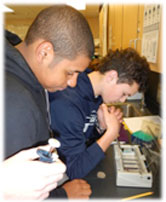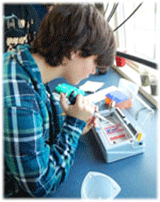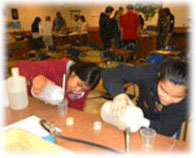
High School Projects
At the high school level projects focus on introducing students to current issues/technology in biology, oceanography, and marine science. Students have the chance to be involved with an ongoing monitoring project, looking at the spread of an invasive species. In addition, students are given the opportunity to learn about the various career paths available in science through guest lectures and lab tours.
Chemistry - Electrophoresis Exploration: Students are introduced to the process of electrophoresis through a series of labs that teach students to use micropipettes, agarose gels, and electrophoresis chambers, etc. Students explore how the process of electrophoresis works to separate molecules by size, shape, and charge. |
|
|
|
Biology - Invasive Mussel Project: Students are involved in the assessment of the spread of an exotic species of mussel, Mytilus galloprovincialis. During this 9 day lab, they use sophisticated electrophoresis techniques to identify the mussel from its DNA fingerprint, which is the only way of separating this cryptic species from native species of the San Juan Islands. Students learn how to use micropipettes and electrophoresis chambers, prepare a PCR cycler solution, make agarose gels and read stained DNA gels.
| 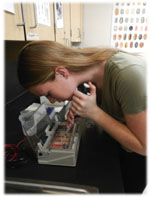 |
Marine Biology: "Diver for a Day" activity - focusing on how divers collect scientific data underwater. Marine Biology and AP Biology: Plankton tows are conducted in the late fall and spring. Then students observe and identify the planktonic collection, focusing on diversity and seasonal differences. Oceanography: Senior oceanography and marine science students are introduced to the importance and purpose of the Department of Ecology's ongoing water column monitoring project. From the University of Washington's Research Vessel Centennial, students collect water column samples to assess water column parameters San Juan Channel. |
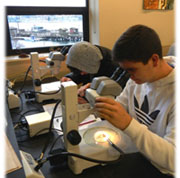 |
| San Juan Islands Watershed Project: The watershed project was initiated in 2002 in partnership with the San Juan Islands Conservation District, with the purpose of collecting baseline watershed water quality data and educating local students about watershed health. Up until 2009, the water quality of 12 major watersheds was monitored on San Juan, Lopez and Orcas Islands every 6-8 weeks. Seven parameters were assessed at most sites: dissolved oxygen, fecal coliform, turbidity, pH and temperature, nutrients (nitrates, orthophosphates), and flow. Although the regular data collection ended in 2009, watershed education and field trips are still occurring to introduce students to the importance of watershed health and water quality monitoring. Students continue to research island watershed systems and compare and contrast sites within the San Juan Island watershed. Through a series of projects, fieldwork and lab work, students gain a strong understanding of watershed health. Students from Friday Harbor High School, Spring Street International School, Lopez School, and Griffin Bay High School have been involved in the project. To find out more about this project go to our Monitoring Projects page. | 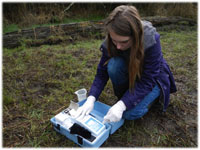 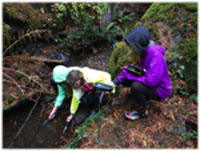 |
Griffin Bay School Projects“Learn by Doing”: Students participate in experiential learning opportunities covering the following projects.
|
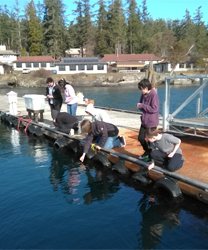 |
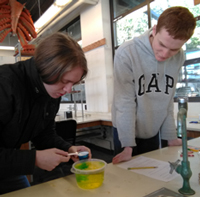 |
Check out the projects we are doing at the Elementary School level and Middle School level.
![]() See photo gallery
See photo gallery

